Abstract
The 8-aminoquinolines, and many other drugs, cause an acute intravascular haemolysis, known as primaquine-sensitivity, in a certain percentage of persons, particularly the darker-skinned peoples of the world. Massive drug programmes for the eradication of malaria in whole population groups frequently call for the use of primaquine; in addition, the use of other haemolytic or potentially haemolytic drugs in clinical medicine is widespread. Thus it is becoming increasingly important to be able to identify primaquine-sensitive individuals in field and clinical laboratories. Two modifications of a new test for primaquine-sensitivity, the methaemoglobin reduction test, are described in detail in this paper. The more simple modification, the field screening test, is practical for surveying large population groups in the field. The more accurate clinical test is also suitable for field use if a clinical spectrophotometer or photoelectric colorimeter is available.
Full text
PDF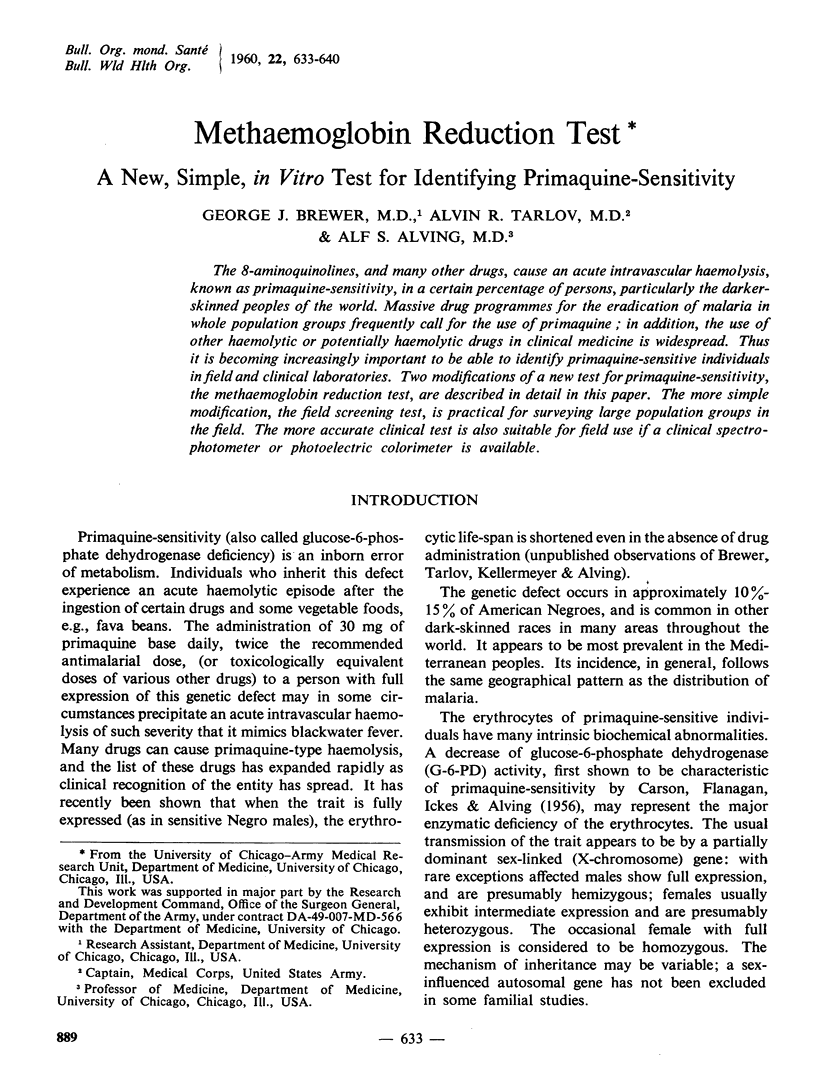
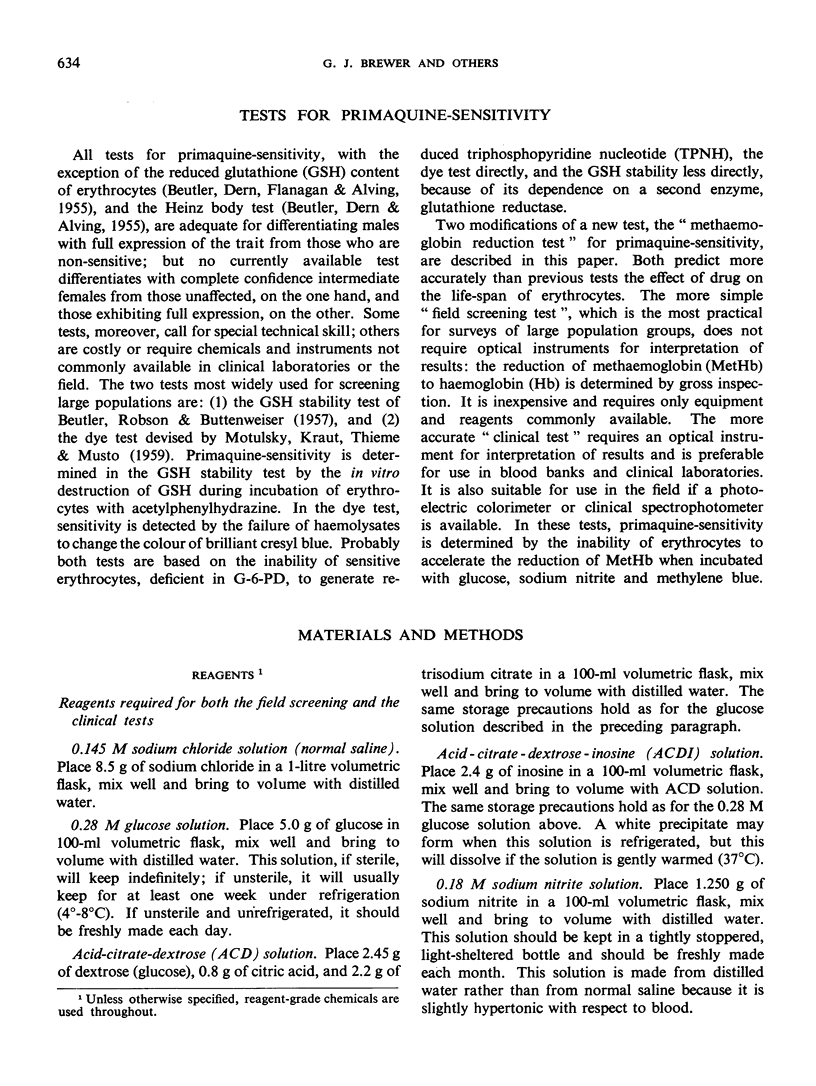
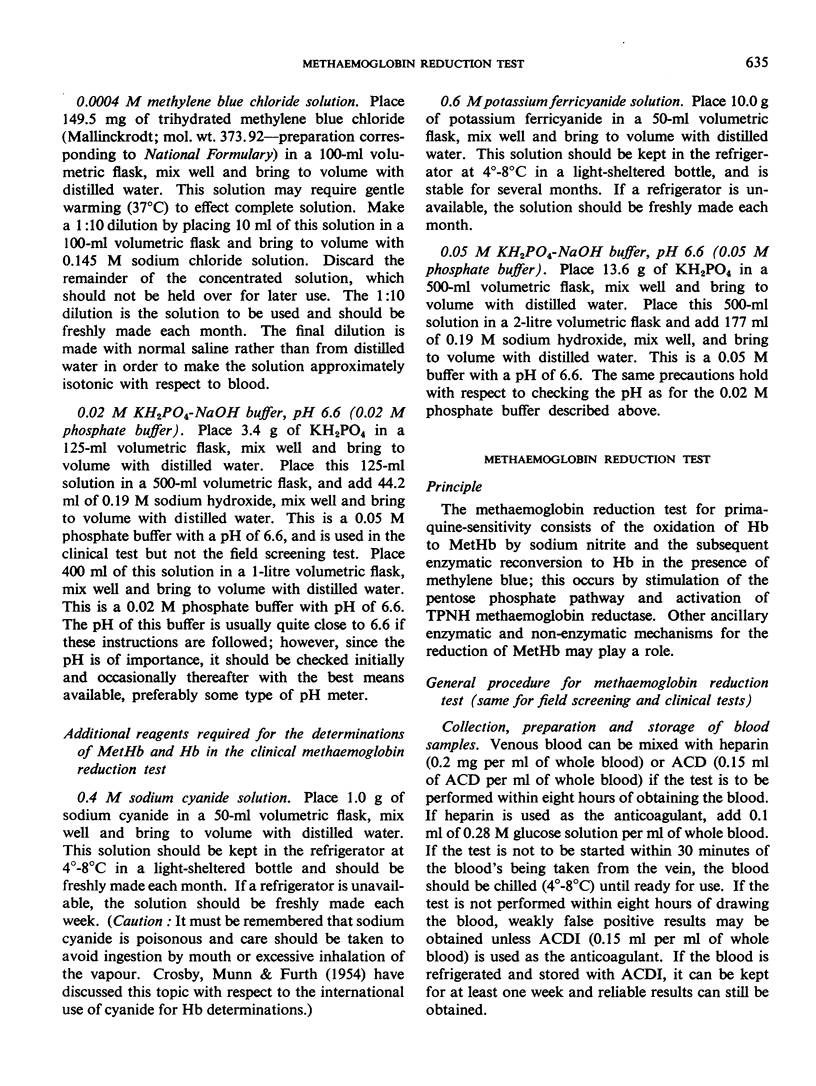
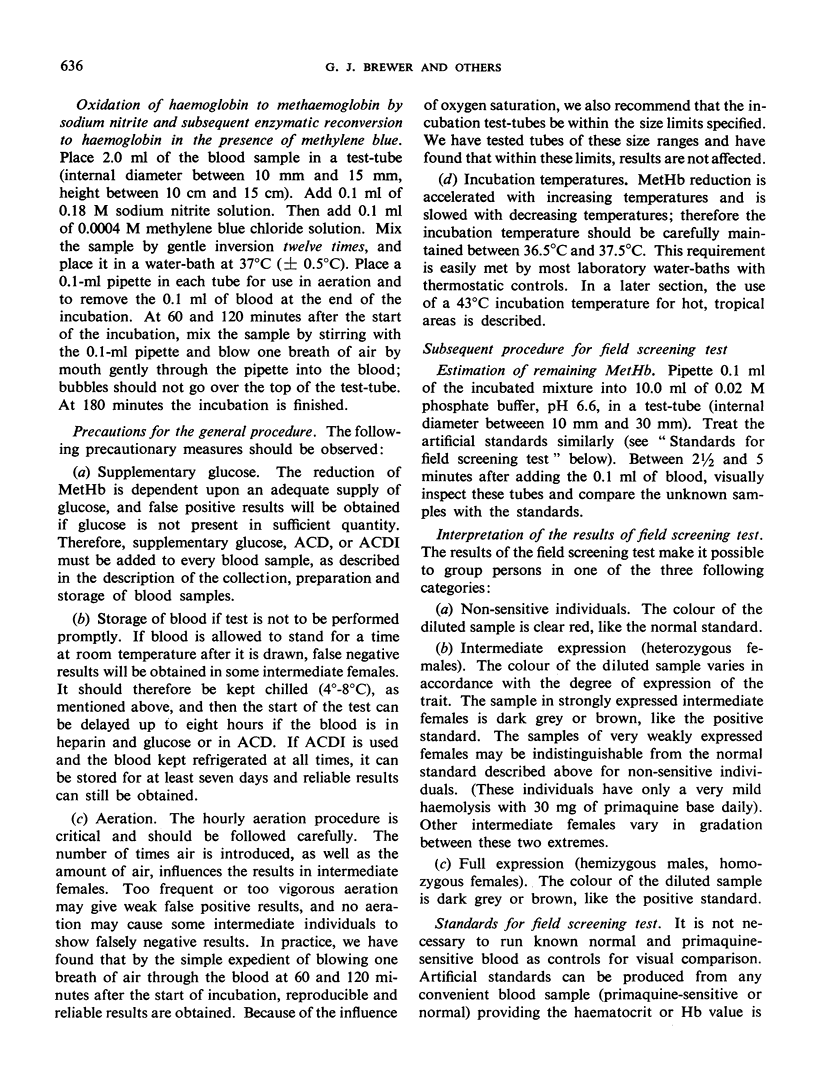

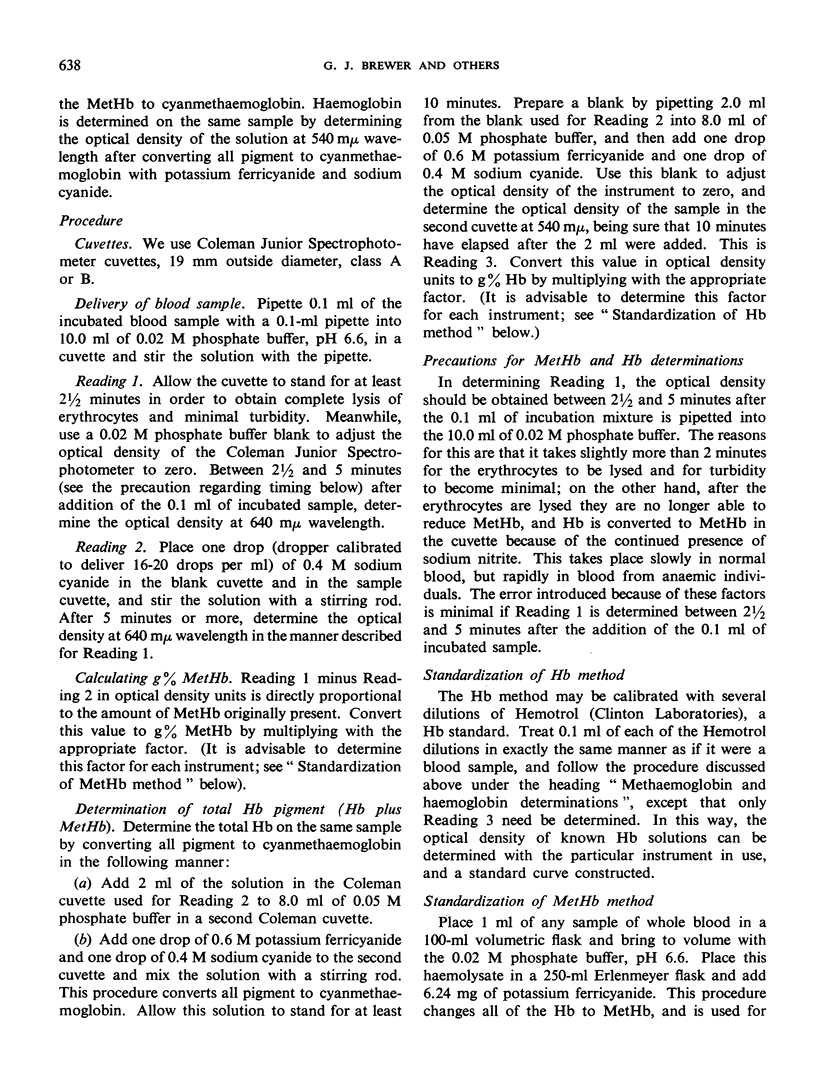
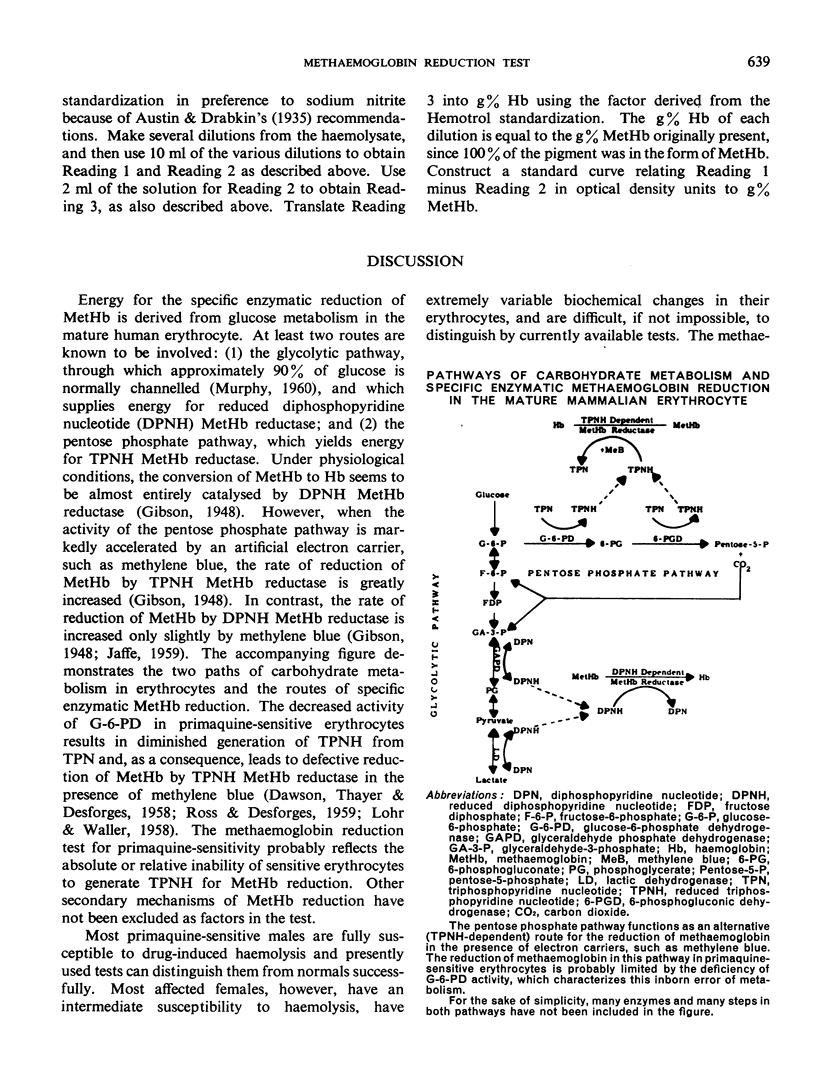
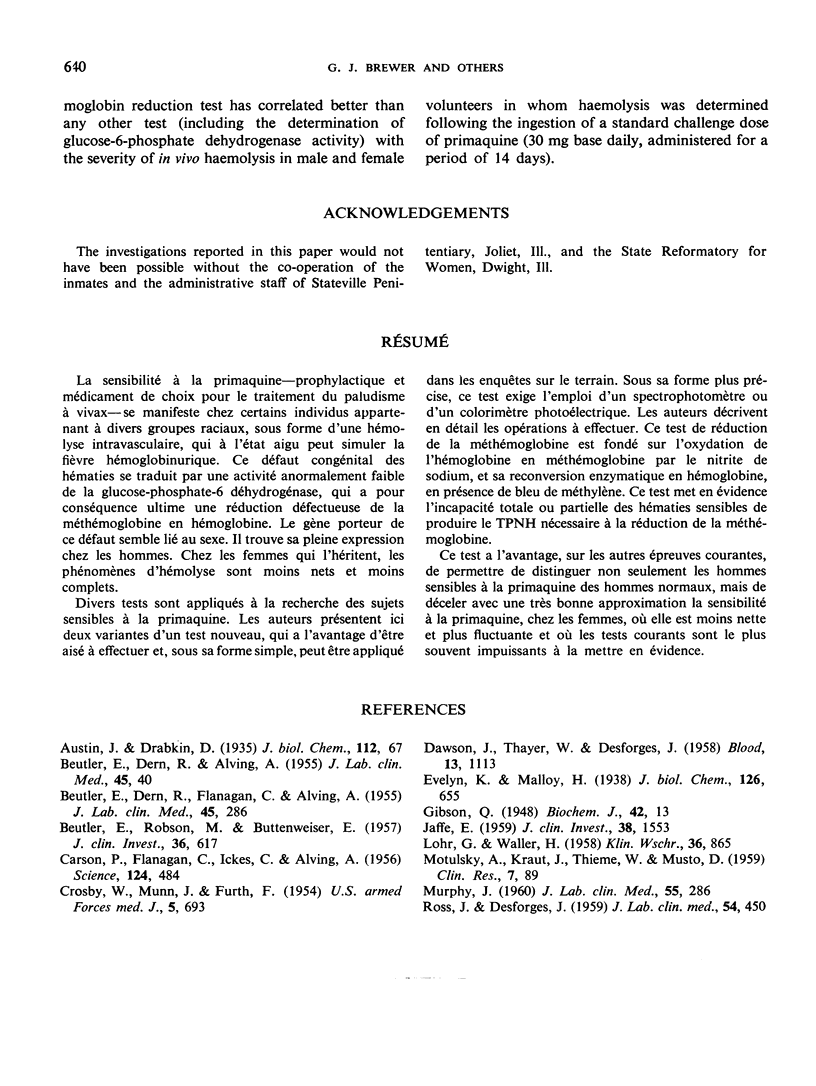
Selected References
These references are in PubMed. This may not be the complete list of references from this article.
- ALVING A. S., CARSON P. E., FLANAGAN C. L., ICKES C. E. Enzymatic deficiency in primaquine-sensitive erythrocytes. Science. 1956 Sep 14;124(3220):484–485. doi: 10.1126/science.124.3220.484-a. [DOI] [PubMed] [Google Scholar]
- BEUTLER E., DERN R. J., ALVING A. S. The hemolytic effect of primaquine. VI. An in vitro test for sensitivity of erythrocytes to primaquine. J Lab Clin Med. 1955 Jan;45(1):40–50. [PubMed] [Google Scholar]
- BEUTLER E., DERN R. J., FLANAGAN C. L., ALVING A. S. The hemolytic effect of primaquine. VII. Biochemical studies of drug-sensitive erythrocytes. J Lab Clin Med. 1955 Feb;45(2):286–295. [PubMed] [Google Scholar]
- BEUTLER E., ROBSON M., BUTTENWIESER E. The mechanism of glutathione destruction and protection in drug-sensitive and non-sensitive erythrocytes; in vitro studies. J Clin Invest. 1957 Apr;36(4):617–628. doi: 10.1172/JCI103461. [DOI] [PMC free article] [PubMed] [Google Scholar]
- CROSBY W. H., MUNN J. I., FURTH F. W. Standardizing a method for clinical hemoglobinometry. U S Armed Forces Med J. 1954 May;5(5):693–703. [PubMed] [Google Scholar]
- DAWSON J. P., THAYER W. W., DESFORGES J. F. Acute hemolytic anemia in the newborn infant due to naphthalene poisoning: report of two cases, with investigations into the mechanism of the disease. Blood. 1958 Dec;13(12):1113–1125. [PubMed] [Google Scholar]
- Gibson Q. H. The reduction of methaemoglobin in red blood cells and studies on the cause of idiopathic methaemoglobinaemia. Biochem J. 1948;42(1):13–23. doi: 10.1042/bj0420013. [DOI] [PMC free article] [PubMed] [Google Scholar]
- LOHR G. W., WALLER H. D. Hämolytische Erythrocytopathie durch Fehlen von Glukose-6-Phosphatdehydrogenase in roten Blutzellen als dominant vererbliche Krankheit. Klin Wochenschr. 1958 Sep 15;36(18):865–869. doi: 10.1007/BF01485234. [DOI] [PubMed] [Google Scholar]
- MURPHY J. R. Erythrocyte metabolism. II. Glucose metabolism and pathways. J Lab Clin Med. 1960 Feb;55:286–302. [PubMed] [Google Scholar]
- ROSS J. D., DESFORGES J. F. Erythrocyte glucose-6-phosphate dehydrogenase activity and methemoglobin reduction. J Lab Clin Med. 1959 Sep;54:450–455. [PubMed] [Google Scholar]


